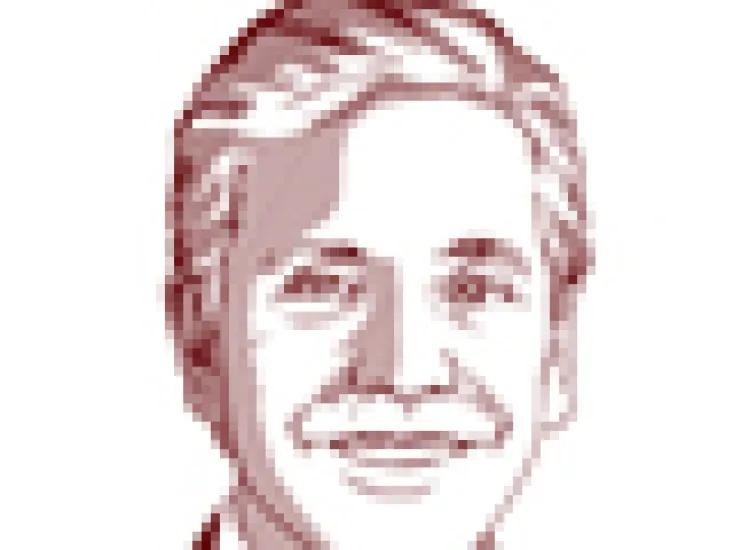WE SUFFER from polarized politics throughout the world. From sovereign states to the United Nations, NATO and every supernational to unions, industry associations and religious groups, there is wide divergence of views. Passionately held beliefs’ effects on the markets are amplified by the Internet, social media and other flattening technologies, as well as by policymakers’ spin.
True, the management of money requires different views on the value of things — how else would there be a market? — but in 40 years of spending swaths of time with some of the best investors of our age, I have never witnessed such clear polarization as today.
Maybe it is because in a policy-driven environment lies smother facts like oily soot. Certainly, in election years the U.S. executive branch is dedicated to promoting a rosy outlook. Worldwide the self-preservation of politicians and policymakers requires that much money and time are spent on propaganda. No wonder every outcome, from nuclear winter to universal warming, seems equally likely.
Conventional models emphasize the role of opinions about value expressed by thoughtful, purposeful players. Devastatingly, they ignore the role of market golems — credit default swaps, derivatives, exchange-traded funds, residential-mortgage-backed securities — and are unprepared to explain the wild swings of sentiment that accompany a policy-driven world. The failure of conventional models was well illustrated in 2011, and this year may be just as wild.
The question we aging quants might ask is, “Have our models just hiccupped — a transient failure — or is this an opportunity for real insight?”
There are insights to be gained; my guess is that we will have plenty of time to gather and test them. It may be many years before markets return to their natural state — an equilibrium of diverse factors — because of degrees of debt and doubt.
Central bank balance sheets now exceed $15 trillion, up from less than $5 trillion in 2007, and direct sovereign debt has gone up a like amount in the same period. Governments and central bankers created this pyramid of debt to promote stability and economic activity, while financing operating deficits. However well intentioned, a huge mortgage on our future serves to polarize the worldviews of investors.
Some investors believe a robust global profit and loss statement is inevitable and will cure the debt through growth and healthy inflation. Others insist that debt will paralyze our economies and lead to managed rates and deflation. These two views cannot be reconciled. Only one can be correct, and this may explain why the politics of compromise has failed utterly in the U.S. and abroad.
Extreme worldviews make partisans of us all and cause markets to oscillate between euphoria and despair, driven by spin. The steadying influence of fundamental reality is swamped by external shocks.
In asset allocation terms, this encourages us to design portfolio exposures like a proprietary trader, in terms of applicable short-term risk regime premiums. A winning allocation is determined not by historical risk-return ratios but more by the price of exposure to or relief from the macro risk regime.
In times like these, the Efficient Frontier — a cartoon invented by my generation as a way to try to optimize risk-adjusted returns — will cause a lot of pain and provide little diversification. Better to recast the client portfolio: first, among markets by the degree to which extremism drives outcomes, and then within markets based on real-time risk premiums.
At Grail Partners we think debt drives outcomes and doubt drives volatility. The most-liquid markets are the most indebted — and therefore the most dangerous. In highly leveraged markets that are dominated by policy extremes, we have allocated away from beta bets and emphasized highly diversified market-neutral portfolios, liability-driven portfolios and portfolios of cash-flowing, hold-to-maturity investments. In less leveraged markets we harp on long-term beta investing through portfolios constructed to avoid capitalization weighting and hedged against extreme foreign exchange flows and other herd behavior by global allocators.
Where extremes of opinion are amplified by huge leverage, caution is wisdom. We stress protection from value overreaching for return, so we are on the other side of the P&L Pollyannas in the same way that the Hatfields were on the other side of the McCoys. That said, although many of our portfolio companies and their clients did well in 2011, the next five years will tell the tale of these two views. In the interim it may be best to underestimate the power of policymakers to do good things and overestimate the power of policymakers to create chaos. • •
Donald Putnam is the founder and managing partner of San Francisco–based Grail Partners, which invests in leveraged buyout, start-up and growth capital situations involving U.S. portfolio management companies.






